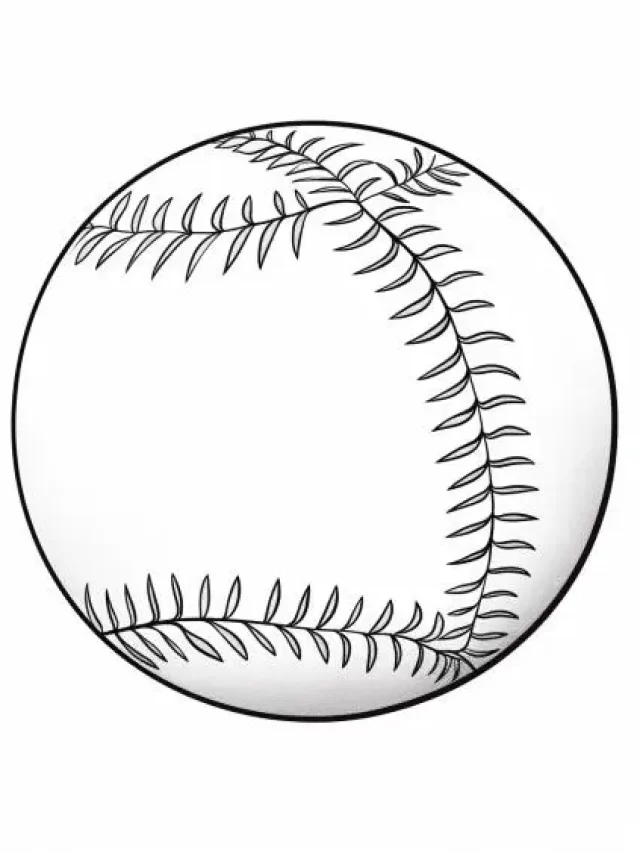
In the intricate dance of baseball strategy, the batting order holds a pivotal role, shaping the rhythm and outcome of the game. It’s not merely a sequence of players taking their turns; it’s a carefully orchestrated strategy that can make or break a team’s performance.
The batting order determines who steps up to the plate when, influencing the dynamics of offense and defense. Teams strategically arrange their players, akin to a chessboard, aiming to outmaneuver their opponents and seize control of the game’s narrative. This seemingly simple decision reverberates through the innings, creating a narrative that unfolds with each swing of the bat.
Now, let’s delve into a question that sparks curiosity and debate among baseball enthusiasts: Does the home team always bat first? It’s a tantalizing puzzle, challenging the conventional wisdom that home turf guarantees the first turn at the plate.
Buckle up as we unravel the layers of this mystery, exploring the strategies, nuances, and historical twists that define the intriguing world of baseball batting order. Get ready to witness how this seemingly routine decision becomes a strategic masterpiece, shaping the ebb and flow of America’s favorite pastime.
The Basic Rule: Home Team Bats Second
In the intricate ballet of baseball, one fundamental rule governs the sequence of play – the home team bats second. This standard convention is deeply ingrained in the fabric of the game, a tradition that has withstood the test of time. The rationale behind this rule lies in the competitive balance it seeks to maintain, ensuring that both teams have an equal opportunity to seize momentum.
When a baseball game commences, the visiting team typically takes the initial offensive stance, sending their batters to the plate to face the home team’s pitcher. This sets the stage for a dynamic exchange where each team gets a fair chance to dictate the tempo early in the game. It’s a rule that adds a layer of fairness to the competition, preventing any undue advantage that might arise if the home team consistently batted first.
However, despite the clarity of this rule, a persistent misconception lingers among spectators and even some enthusiasts. The idea that the home team always bats first can be traced back to a variety of factors, including casual observations, misinterpretations, and perhaps a touch of romanticism associated with the idea of the home team taking the lead.
Some may have formed this belief through selective memory, recalling instances where the home team happened to bat first in specific games. Others might have been influenced by regional variations in rules, such as those found in recreational leagues.
Nevertheless, it’s essential to dispel this myth and embrace the standardized practice that underlines the fairness and equilibrium inherent in the game’s design. As we journey through the intricacies of baseball’s batting order, we’ll unravel the truth behind this common misconception and shed light on the strategic decisions that shape the flow of the game.
Strategies Behind Batting Order
In the chess-like strategy of baseball, the decision of whether to bat first or second is a tactical maneuver that teams meticulously weigh based on various factors. Understanding these considerations reveals the fascinating tapestry of decision-making that goes into shaping the batting order.
Setting the Tone: Batting First
- Offensive Aggression: Choosing to bat first allows a team to set the tone early in the game. Aggressive teams may opt for this approach to put immediate pressure on their opponents.
- Home Field Advantage: Capitalizing on the familiarity of their home turf, teams might choose to bat first, leveraging the crowd’s energy to gain an early advantage.
Responding to the Opposition: Batting Second
- Strategic Observation: Bypassing the initial offensive round allows the home team to observe the visiting team’s tactics, adjusting their strategy accordingly. This methodical approach is often favored by teams with a strong analytical focus.
- Late-Game Flexibility: By batting second, a team gains the advantage of responding strategically in the later innings, adjusting their lineup based on the evolving dynamics of the game.
Historical Gambits and Unconventional Choices
- Surprising the Opponent: Throughout baseball history, there have been instances where teams defied convention, choosing an unconventional batting order to catch their opponents off guard.
- Pitcher Batting Eighth: Some managers, seeking to optimize offensive opportunities, have experimented with placing a pitcher in the eighth spot rather than the traditional ninth, creating additional batting opportunities before the lineup turns over.
Outcome of Unconventional Choices
- Success Stories: Delve into historical games where teams’ unconventional batting strategies led to unexpected victories or turning points in crucial matchups.
- Learning from Failure: Analyze instances where experimental batting orders didn’t pan out as intended, providing valuable lessons for future teams and managers.
As we navigate the intricate world of baseball’s batting order strategies, we’ll uncover how these tactical decisions can profoundly impact the outcome of games, shaping the narrative of each match in surprising and strategic ways.
Advantages of Batting Order
In the intricate chess match that is baseball, the decision of whether to bat first or second carries significant implications. Let’s delve into the advantages that come with being on the home team and electing to bat second, backed by both strategic insights and statistical evidence.
Home Field Advantage
- Fan Momentum: The undeniable energy from a home crowd can serve as a powerful motivator. By batting second, the home team harnesses this crowd momentum, creating an electric atmosphere that can boost player morale and performance.
- Walk-Off Opportunities: The last at-bat in a game is reserved for the home team when they bat second. This presents a unique advantage: the potential for a walk-off victory, where the home team clinches the win with a dramatic play in the final inning.
Strategic Observation
- Adaptability: Batting second provides a strategic advantage by allowing the home team to observe the opposing pitcher and defensive plays during the first inning. Armed with this information, the home team can adapt their offensive strategy, making informed decisions as the game progresses.
- Lineup Adjustments: With the opportunity to witness the visiting team’s pitching strategy, the home team can make more informed decisions when adjusting their batting lineup in subsequent innings.
Late-Game Flexibility
- Strategic Substitutions: Batting second provides flexibility in making late-game substitutions. Managers can strategically insert pinch-hitters or pinch-runners based on the evolving dynamics of the game.
- Pitching Decisions: The advantage of batting second extends to pitching decisions. The home team can optimize their bullpen usage, responding strategically to the opposing team’s lineup.
Statistical Evidence and Trends
- Winning Percentages: Statistical analyses consistently show that teams batting second, especially in close games, have higher winning percentages. This trend suggests that the strategic advantages of observing the opponent and having the final at-bat contribute significantly to overall success.
- Late-Game Run Production: Studies indicate that teams batting second often experience an uptick in late-game run production. This statistical trend aligns with the flexibility and adaptability that come with having the final offensive opportunity.
As we unravel the intricacies of baseball’s batting order, it becomes evident that the decision to bat second offers tangible advantages that extend beyond mere tradition. Supported by statistical evidence and strategic considerations, this approach has become a cornerstone of successful baseball gameplay, shaping the outcomes of thrilling contests on the diamond.
Common Misconceptions
In the world of baseball, certain myths persist, and one of the most enduring misconceptions revolves around the assumption that the home team always bats first. Let’s unravel this myth, exploring the true or false aspect and delving into the reasons behind the persistence of this belief.
The True or False Conundrum
- False: Contrary to popular belief, the home team does not always bat first. The standard convention, deeply ingrained in baseball’s rulebook, dictates that the visiting team typically takes the initial offensive stance, allowing the home team to bat second.
Origins of the Misconception
- Casual Observations: Many baseball enthusiasts, especially casual observers, might form their beliefs based on sporadic observations rather than a comprehensive understanding of the game’s rules. An occasional instance of the home team batting first can contribute to this misconception.
- Nostalgia and Tradition: Romanticizing the idea of the home team taking the lead may play a role in perpetuating this myth. Tradition and nostalgia often shape perceptions, and the image of the home team stepping up to the plate first aligns with a romanticized view of the game.
Regional Variations and Recreational Leagues
- Rule Variations: In some recreational leagues or specific regional variations, rules might differ, leading to occasional instances where the home team bats first. These exceptions can contribute to the confusion.
- Informal Play: In less formal settings, such as casual backyard games or youth leagues, variations in rules might occur, further blurring the lines between formal regulations and informal play.
The Reality of Batting Order in Baseball
- Competitive Fairness: The standardized practice of having the visiting team bat first ensures competitive fairness. It provides both teams with an equal opportunity to influence the game’s trajectory from the offensive standpoint.
- Tactical Dynamics: Understanding the true order of play allows fans and enthusiasts to appreciate the strategic dynamics of baseball. The decision of whether to bat first or second is a calculated choice, shaping the course of the game strategically.
As we demystify the belief that the home team always bats first, it becomes clear that this misconception is rooted in occasional exceptions, nostalgia, and perhaps a lack of comprehensive knowledge about the sport’s rules. Baseball’s enduring traditions and strategic nuances reveal a rich tapestry that extends beyond simplistic assumptions, inviting fans to appreciate the game’s intricacies with a fresh perspective.
Team Preferences and Game Dynamics
In the strategic realm of baseball, the decision to bat first or second is not a one-size-fits-all approach; rather, it reflects the unique identity and strengths of each team. Let’s delve into the nuanced world of team preferences and game dynamics, exploring how different teams approach this decision and the influences of game dynamics and team strengths.
Offensive Powerhouses: Batting First
- Aggressive Start: Teams known for their powerful offense might opt to bat first to capitalize on their strengths immediately. This aggressive approach seeks to put pressure on the opposing pitcher from the outset, leveraging the team’s batting prowess.
- Setting the Tone: Offensive powerhouses aim to set a dominant tone early in the game, potentially gaining an early lead that their opponents must then overcome.
Strategic Observers: Batting Second
- Analytical Focus: Some teams prefer to observe their opponents first, choosing to bat second. This analytical approach allows them to gather information about the opposing pitcher’s strengths and weaknesses during the initial innings.
- Adaptive Strategy: Armed with insights from the first inning, teams can then strategically adapt their offensive game plan, making informed decisions about lineup adjustments and hitting strategies.
Pitching-Centric Teams: Batting Second
- Pitcher’s Advantage: Teams with a strong pitching lineup often prefer batting second. This choice allows their pitchers to dictate the early pace of the game, putting pressure on the opposing team by delivering a strong defensive performance.
- Late-Game Control: Pitching-centric teams value the late-game flexibility that comes with batting second. They can strategically manage their bullpen and make late-game substitutions based on the evolving dynamics.
Balanced Approaches
- Versatile Strategies: Many teams adopt a balanced approach, weighing both offensive and defensive factors. They might consider the strengths and weaknesses of the opposing team, the pitching matchup, and the dynamics of the game.
- Adapting to Circumstances: Teams with a versatile strategy remain flexible, adapting their batting order decisions based on specific circumstances such as weather conditions, the state of the playing field, or the overall team morale.
Influence of Team Dynamics
- Team Chemistry: The cohesion and chemistry within a team can influence their decisions. A team with a strong bond might prioritize the psychological advantage of batting second, trusting in their ability to rally late in the game.
- Managerial Philosophy: The managerial philosophy plays a crucial role. A manager’s strategic outlook, experience, and knowledge of their team’s strengths guide the decision-making process regarding the batting order.
Understanding how different teams navigate the decision to bat first or second reveals the intricate dance between offensive aggression, strategic observation, and the unique dynamics that define each team. As we explore the strategic depth of baseball’s batting order, we discover a sport where every decision reflects a team’s identity and their quest for victory on the diamond.
Historical Examples
In the rich tapestry of baseball history, specific games and instances stand out as testaments to the profound impact of strategic decisions regarding the batting order. Let’s journey through time to highlight these historical examples, showcasing how these decisions influenced the outcome of crucial matchups.
1956 World Series: Game 5: Brooklyn Dodgers vs. New York Yankees
- The Duke’s Heroics: In a pivotal Game 5, the Brooklyn Dodgers faced the New York Yankees. Dodgers’ manager Walter Alston strategically placed Duke Snider in the cleanup spot. The move paid off as Snider delivered a crucial home run, demonstrating the strategic potency of thoughtful batting order decisions.
- Outcome: The Dodgers won the game 5-3, gaining a crucial edge in the series. Snider’s heroics showcased how a well-considered batting order could tilt the balance in a team’s favor.
1975 World Series: Game 6: Boston Red Sox vs. Cincinnati Reds
- Cincinnati’s Comeback: In a memorable Game 6, the Cincinnati Reds faced a 3-2 series deficit against the Boston Red Sox. The Reds’ manager, Sparky Anderson, made a strategic move, placing Ken Griffey Sr. in the leadoff spot. Griffey’s offensive contribution ignited a comeback, contributing to the Reds’ eventual victory in the series.
- Outcome: The Reds won Game 6, ultimately securing the World Series title in seven games. This historical example underscored the pivotal role of the batting order in shaping the narrative of a championship series.
2001 American League Division Series: Game 3: Oakland Athletics vs. New York Yankees
- The Giambi Factor: In a dramatic Game 3, the Oakland Athletics faced the New York Yankees. A’s manager, Art Howe, made a strategic move, placing Jason Giambi in the leadoff spot. Giambi’s offensive prowess set the tone, helping the Athletics secure a critical victory.
- Outcome: The Athletics won the game 11-1, showcasing how a bold decision in the batting order could dramatically impact the outcome of a crucial postseason matchup.
2016 World Series: Game 7: Chicago Cubs vs. Cleveland Indians
- The Maddon Effect: In the climactic Game 7 of the 2016 World Series, the Chicago Cubs faced the Cleveland Indians. Cubs’ manager Joe Maddon made strategic adjustments throughout the game, including the decision to place Kyle Schwarber in the leadoff spot. Schwarber’s offensive contribution and Maddon’s strategic maneuvering played a pivotal role in the Cubs’ historic championship win.
- Outcome: The Cubs won Game 7 in extra innings, ending a 108-year championship drought. This example showcased how meticulous batting order decisions could influence the outcome of a high-stakes game.
These historical examples underscore the profound impact of strategic decisions in the batting order on the grand stage of baseball. From World Series heroics to pivotal postseason moments, these instances reveal the intricate chess match that unfolds on the diamond, where every move in the batting order can shape the destiny of a team and etch its place in the annals of baseball history.
Conclusion
As we traverse the strategic landscape of baseball’s batting order, several key insights come to light. The conventional wisdom that the home team always bats first is dispelled, revealing a standardized practice that ensures competitive fairness. Home field advantage, strategic observation, and late-game flexibility emerge as the pillars influencing the decision to bat second, showcasing the nuanced dance between offense and defense.
Exploring historical examples, we witness the profound impact of strategic decisions on the outcome of critical matchups. From Duke Snider’s heroics in the 1956 World Series to the Chicago Cubs’ historic triumph in 2016, the batting order becomes a canvas where managerial prowess shapes championship narratives.
Teams approach the decision strategically, with offensive powerhouses opting for an aggressive start, while analytical minds observe first and adapt later. Pitching-centric teams leverage the advantage of late-game control, creating a dynamic chess match that defines the identity of each team.
In the intricate ballet of baseball, the batting order is not merely a sequence; it’s a strategic masterpiece that unfolds inning by inning. It’s an art where every decision and every placement echoes the team’s philosophy and influences the game’s narrative.
As you revel in the glory of America’s favorite pastime, embrace the nuances of the batting order. Whether you’re a seasoned enthusiast or a newcomer to the game, understanding the intricacies adds a layer of appreciation to the sport. So, next time you hear “Play Ball!” remember, the strategic choices in the batting order are the silent orchestrators shaping the symphony of each baseball game.
How much did you like Batter Up: Unveiling the Dynamics of Baseball Team Batting? Share your view in the comment box. Also, share this blog with your friends on social media so they can also enjoy it. For more blogs, visit baseballpropicks.com
Related Article:
- Cultural Impact: Baseball Caps in Fashion
- Understanding the Basics of Baseball
- Historical Moments in Baseball
- Inside Baseball: The Core Cover
- Best Baseball Gloves by Positions

Meet Daniel Anderson, the heart and soul behind Baseball Pro Picks. At 49, Daniel’s life has revolved around baseball, a passion that’s as strong today as it was when he first fell in love with the game. Living in the USA, Daniel has dedicated countless hours to watching, analyzing, and understanding every pitch, hit, and home run, making almost no game missed. His deep-rooted love for the sport is matched only by his commitment to sharing insightful, expert analysis with fellow baseball enthusiasts. With decades of experience and a keen eye for the game’s nuances, Daniel brings a unique perspective that enriches Baseball Pro Picks. Trust Daniel to guide you through the intricacies of baseball with the authority and trustworthiness of a true aficionado.












